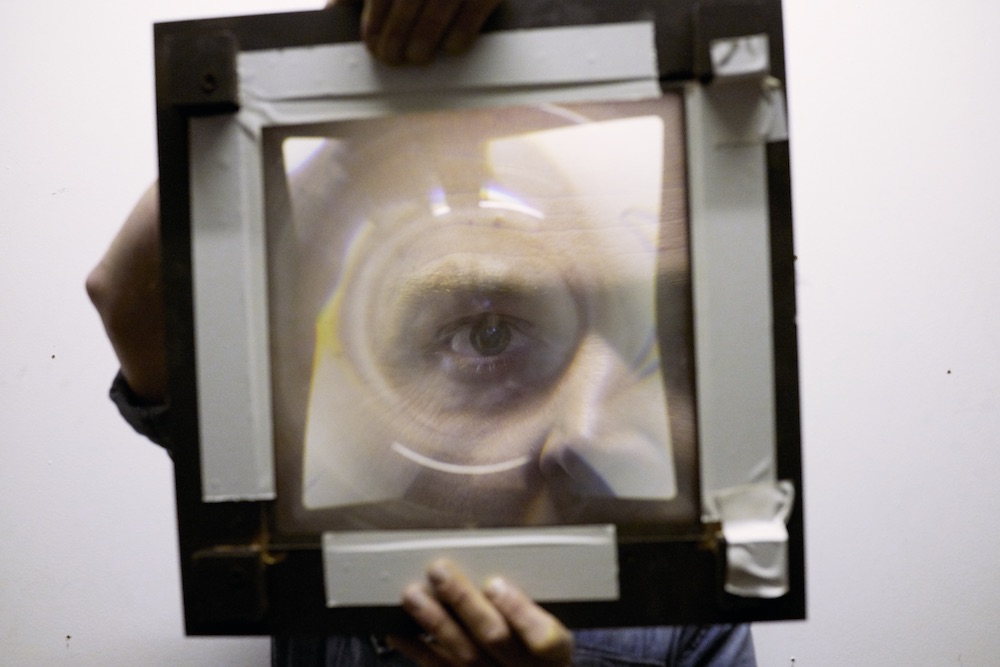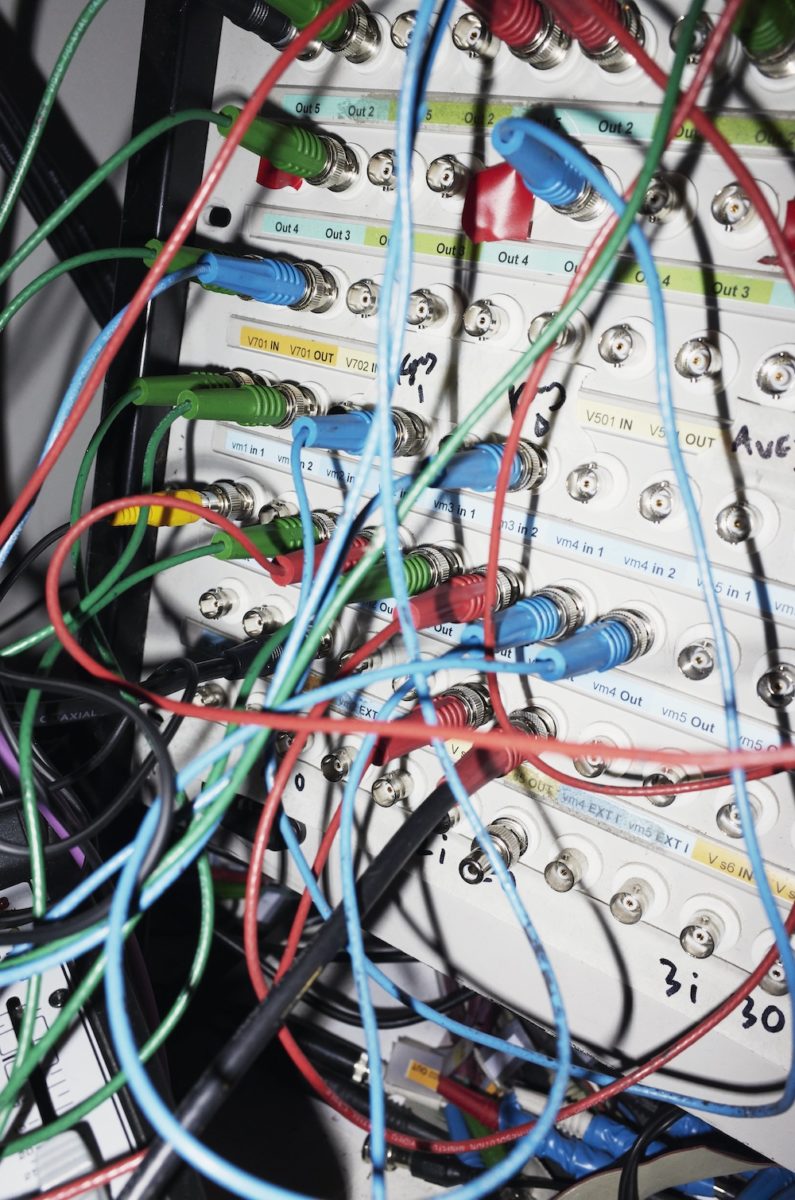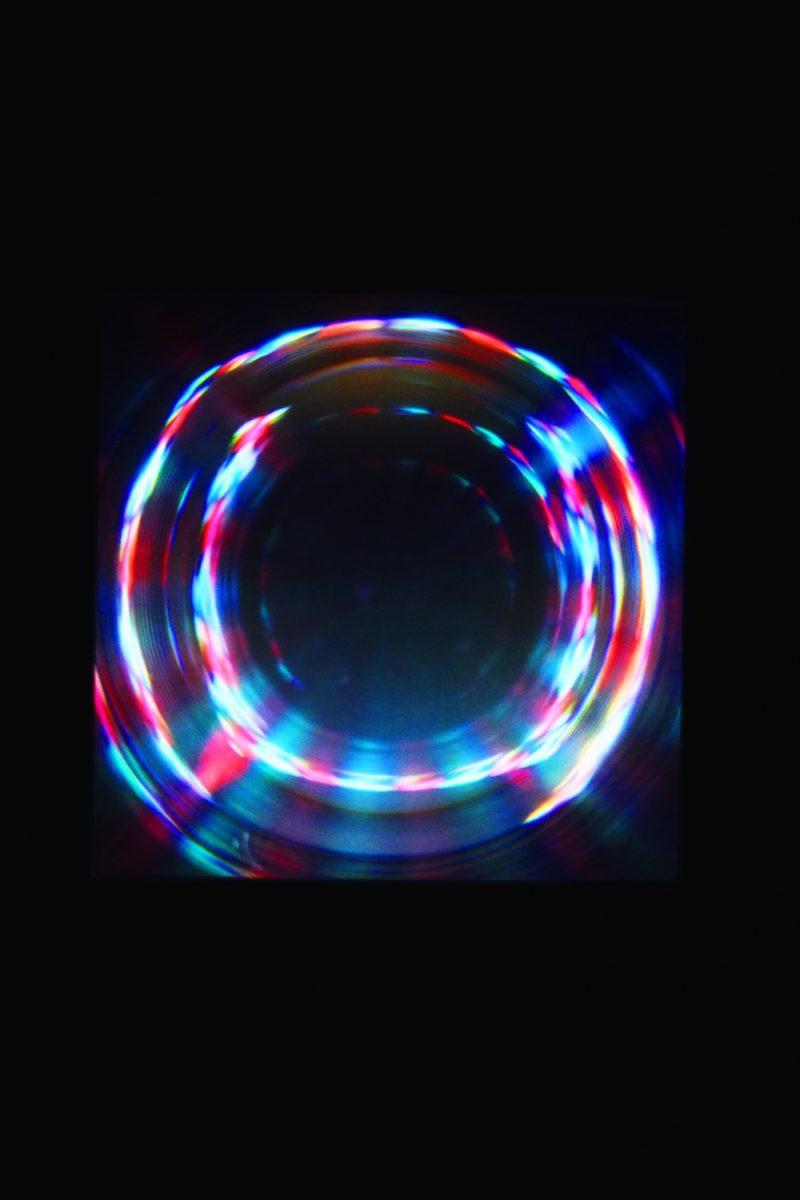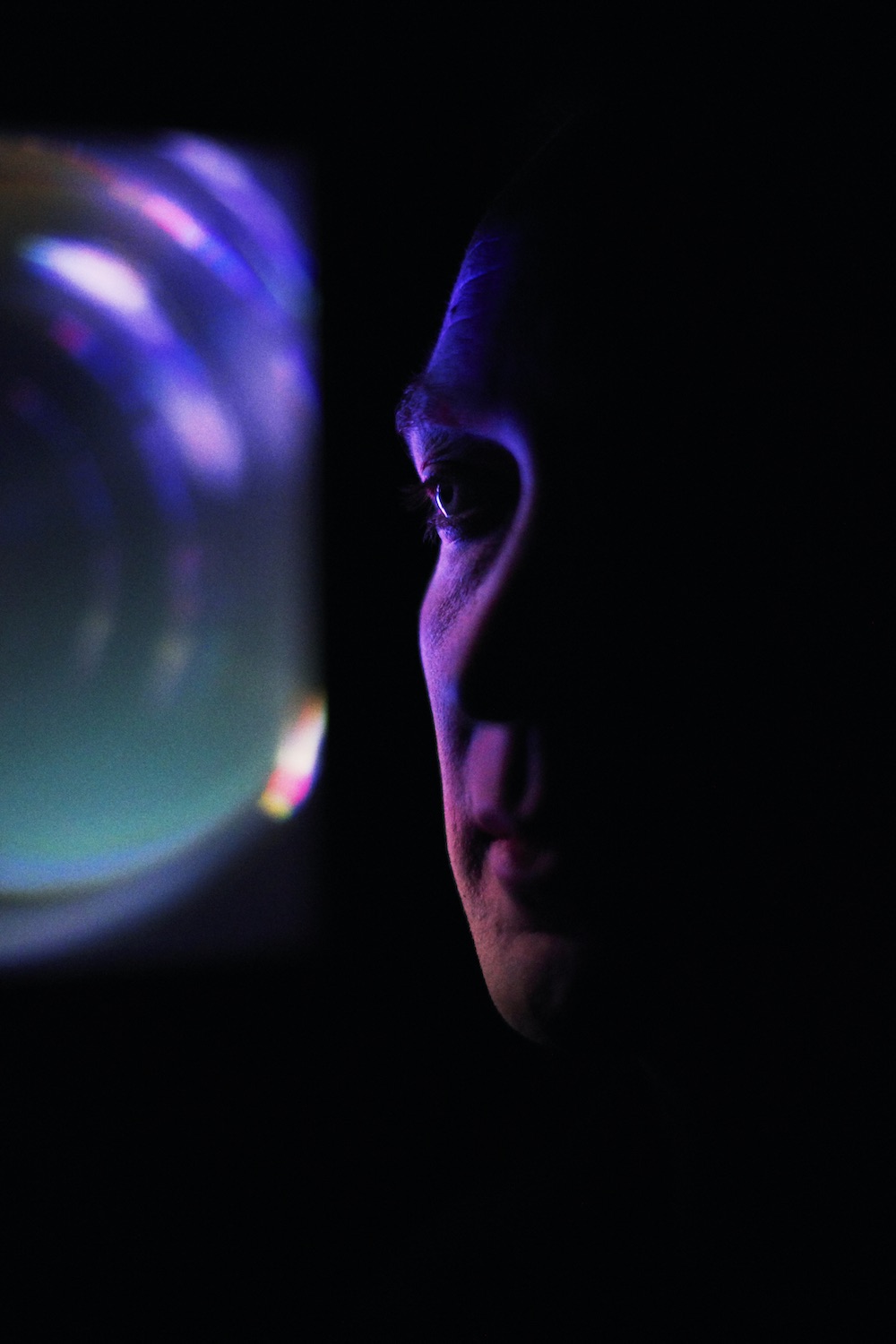 Tucked away under a railway arch and down an inconspicuous alleyway, James Alec Hardy’s South London studio is chock full of monitors, video mixers and an array of other obsolete pieces of technology that to the uninitiated look to be fit only for the scrapheap. But to Hardy they are full of possibility. There is a tiny room at the back where he makes his video works and there is a slightly larger area next to this where he tests ideas for his multi-screen video pieces. The artist has occupied this intimate space in the “double height archway”, home to artists’ collective Warrior Studios, for the past five years.
Tucked away under a railway arch and down an inconspicuous alleyway, James Alec Hardy’s South London studio is chock full of monitors, video mixers and an array of other obsolete pieces of technology that to the uninitiated look to be fit only for the scrapheap. But to Hardy they are full of possibility. There is a tiny room at the back where he makes his video works and there is a slightly larger area next to this where he tests ideas for his multi-screen video pieces. The artist has occupied this intimate space in the “double height archway”, home to artists’ collective Warrior Studios, for the past five years.

So, this is where the magic happens. It’s a small space but you pack in so much equipment. How did you end up working with obsolete analogue machines?
I’m thirty-eight-and-three-quarters-and-a-week, and what I didn’t realize [until recently] was that I’ve been working with these machines for twenty-five years. It goes back to when I was fourteen and bought my first analogue synthesiser in the early nineties. I didn’t think I collected anything, but then I realized I had fifteen drum machines. So it came from going down this path of collecting analogue musical instruments and then working with sound. I started to work with video when I was at Camberwell College of Arts in the late nineties, and then came the pairing of the two [sound and video], just before everything went HD. All this equipment was coming out that was very expensive and the old stuff was being dumped on eBay. I made it my remit to collect equipment as cheaply as possible. My studio is a collection of machines and I keep collecting more and more things through eBay. I see it as scraping the bottom of the barrel—using stuff that has been replaced. You can always repurpose and reuse something to create a different effect.
“Painting is a language that has completely expanded and encompasses everything—colour, line, form and context.”
How do you work with the equipment you collect?
It comes down to the trace of the hand on the machine. Essentially it is the flow of video that’s going through the system that you have control over. This is camera-less video, meaning it is feedback made from x amount of machines. You’re controlling different variables, but there’s a flow of current going around. What you see on screen is how I am monitoring the signal at a precise point in the cycle. The machines are like ordered devices, which you can use to create a pool of chaos. It’s about creating an effect that I can reintroduce into multiple screen-based works shown as motifs sculpturally.
Is it accurate to say that your work falls somewhere between sculpture and installation? How would you describe the work you make?
I wouldn’t necessarily say I’m making installations. It’s moving image in sculpture and installation. It always comes down to the medium you’re picking being the one that is most suited to pushing forward the idea you’re trying to deliver. People ask me what I do and I say I make paintings. “With acrylic?” they ask. “No—with screens.” The language is painting, but it doesn’t mean I’d say I’m a painter. Painting is a language that has completely expanded and encompasses everything—colour, line, form and context. I don’t affiliate myself with any particular “glitch art” group or community. Instead of looking for the glitches it’s, “let’s start from fresh”—from nothing, an abstract environment. I would say I’m a minimalist. The future is about stripping things back so the quality of your attention is more focused.
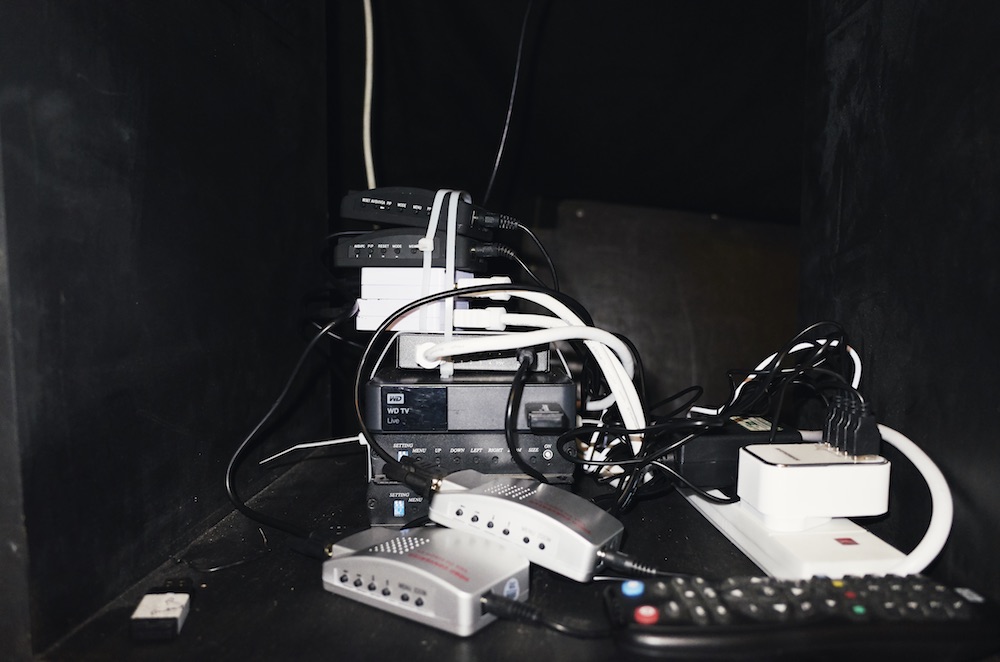
You recently had a solo show at Kristin Hjellegjerde Gallery—Some Things are Clearer in The Dark—where you explored the idea of portals. What can you tell us about the exhibition?
I knew the kind of motifs I wanted to make and the effect I wanted them to have. A lot of motifs I’ve used before are to do with power, dominance and control—working through quite ancient symbols that resonate with us. The portals idea came from making something that relates to our scale as humans. All the works were about creating negative spaces on the wall, which were doorway-sized, and the screens were used to create an outline. You have to reflect on this dimension of reality we’re sharing now. What is through the other side? So it was to try and show that there are worlds beyond worlds and we shouldn’t feel trapped in the one we’re in. I’m projecting onto the idea of what a portal or doorway can represent and it’s a choice of whether you go through something, circumnavigate it or… You have to commit to going somewhere else and, in doing so, leave something else behind.
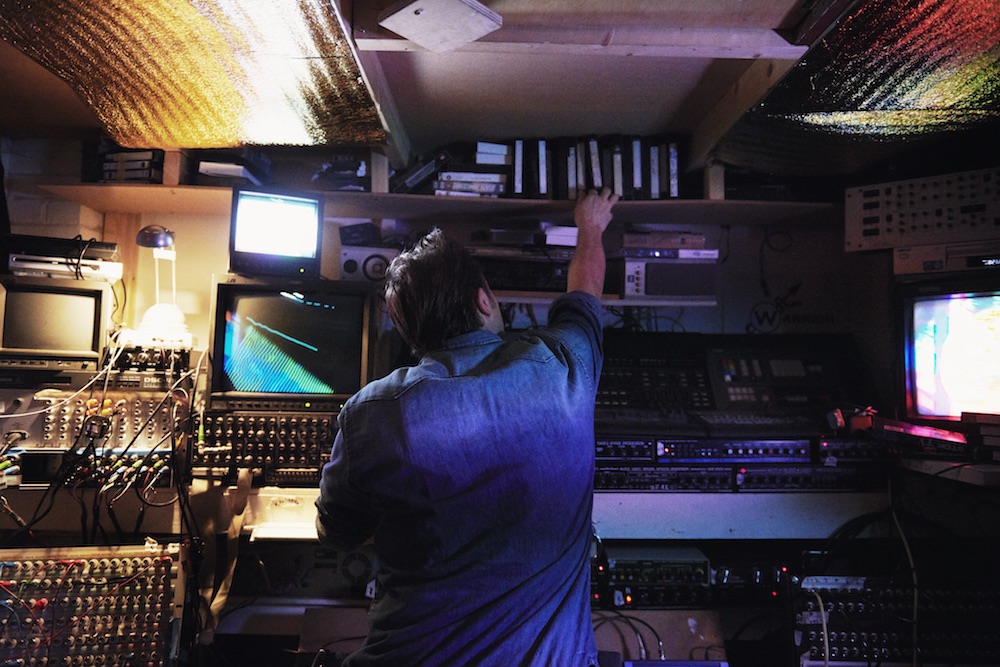
In a previous piece about your work published by Elephant, the writer commented that “Hardy shocks with colour”. Is your intention to shock? What do you want to say through your work?
I’m kicking back against being completely entwined in the bondage of the technology by trying to re-present it. But the dichotomy is that this bondage has to exist in the technology in order for you to be able to see the video. I’m very conscious of the type of gesture in the video that will work on the arrangement of the screens to create the effect I want. As the effect occurs, it’s a constant wrestle between order and chaos.
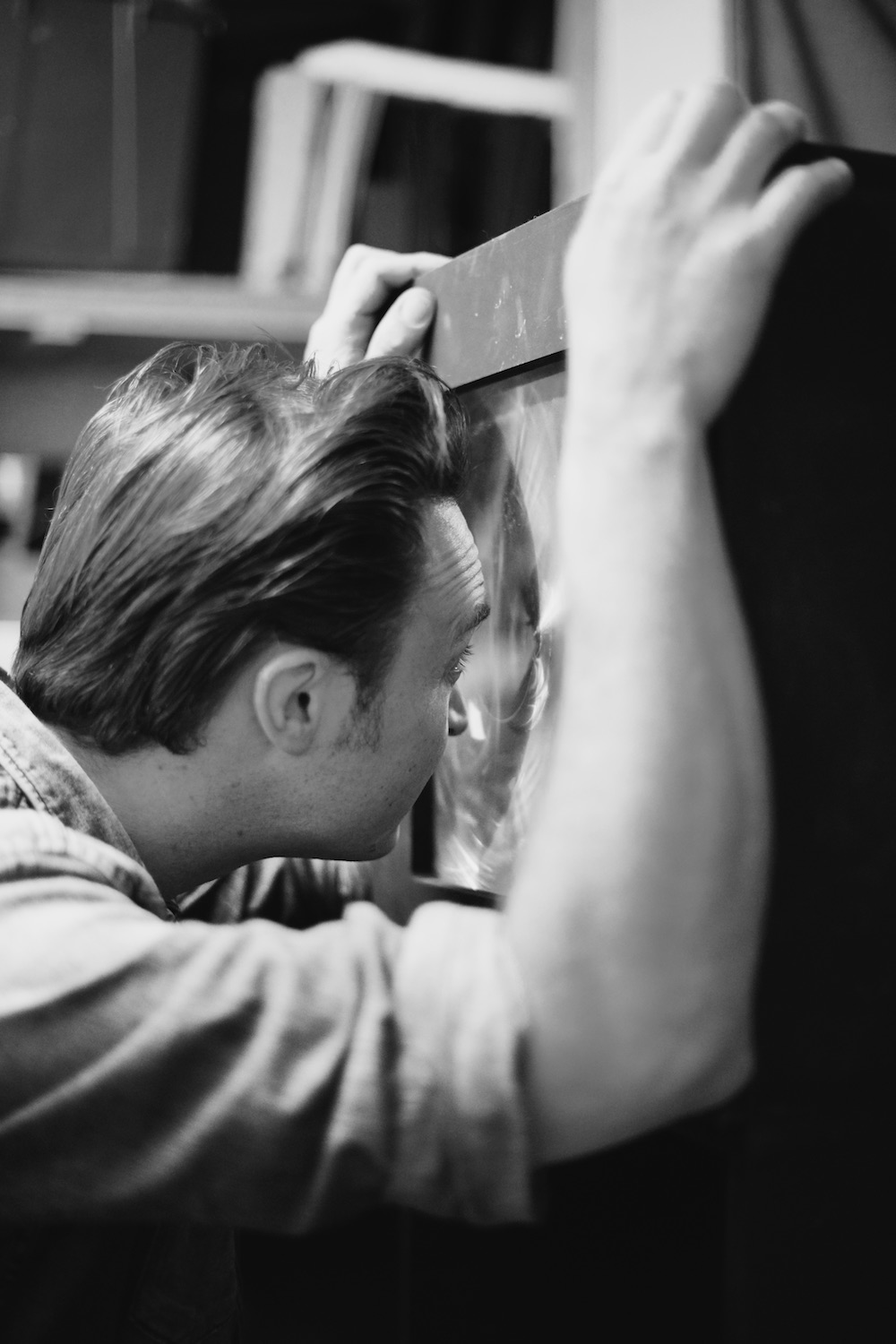
What are you working on at the moment?
I have some work in-progress where I’ve ruptured the frame using a “focused reflection box”. I wanted to work out a way to show the effect of the video, rather than the video itself. It’s a VJ screen with a Fresnel lens. The essence of the work is a video that fades in and fades out and the ghostly version appears on the wall. It is crazily exciting that you can turn a VJ screen into a three by two-metre “projection”. The nature of the video becomes something else. To me, it is about making the content of the video less important than what we’re seeing [on the wall]—a translation of a process through video. I’m trying to see this as a further exploration into how I can minimalize things—what can you keep removing but still say the same thing?
“A lot of motifs I’ve used before are to do with power, dominance and control.”
Given your penchant for minimalism, is your work a reaction to the chaos of the world, a process of distilling things in order to find a quiet point amid the noise?
I think that’s the responsibility of artists—we can dive into chaos and come out the other side and say, “look what I’ve found, let’s make some sense of this”. You have a great responsibility as an artist, a great power to communicate other worlds.
Photography by Benjamin McMahon
